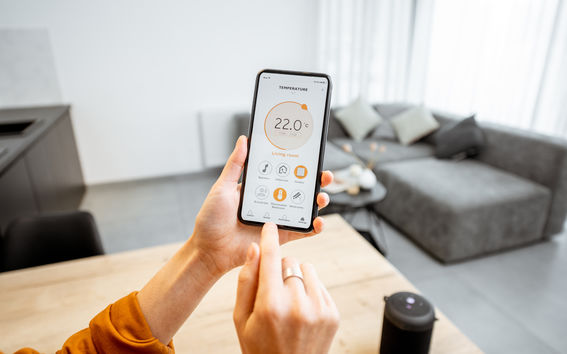Demand-side management of electricity use advances transition to a carbon-neutral energy system

The intermittent availability of renewable energy poses a challenge to the green energy transition. A new research project investigates how municipalities and homes can adjust their consumption of electricity to achieve carbon reductions and cost savings.
The energy crisis of the previous winter spurred consumers to look for ways to save in energy costs through demand-side management (DSM). Consumers' cost-saving measures ranged from the timing of laundry machine use to the installation of complete smart home systems. In the future, all consumers should have access to more DSM measures and solutions. In addition to savings on the electricity bill, DSM has a significant role to play in the transition to a carbon-neutral energy system.
Starting this October, the FLAIRE project (Solutions for transition: Fair, flexible and socially resilient energy systems) will study DSM solutions in municipalities and households and promote their wider adoption in collaboration with actors in the energy sector. The aim is to produce feasible and fair measures and solutions through which clean and affordable energy is made available to municipalities and households, including those with fewer economic means. The Strategic Research Council within the Research Council of Finland granted the project approximately 2,7 million euros in funding, including roughly 450 000 euros allocated to Aalto University.
'The structural change in electricity production increases the need for demand flexibility from the system's perspective, but also highlights the positives of flexibility to the consumer. In this project, we aim to consider both points of view and study what demand-side management could or should mean for the transformation of the Finnish energy sector, what barriers hinder the adoption of DSM, and how they might be removed,' says Professor Ilkka Keppo of Aalto University.
A clean energy system will require adjusting electricity use
The energy solutions of the future are based on renewable energy, such as wind or solar power. The main challenges related to these forms of energy are adequacy and intermittency. When the sun shines on a windy day, there is a great deal of renewable energy available, but less is produced on a calm, frosty day — when much more is consumed. Demand-side management solutions help to even out the consumption of energy and thus help in the transition to fossil-free energy production.
DSM can be based on either the reduction of overall energy consumption (energy saving) or on shifting electricity use to times in which more electricity is available (demand shifting). Both DSM models can rely on either consumer activity (e.g. the timing of laundry) supported by solutions based on information steering or technology (such as a smart home system) that automatically manage consumption. Municipalities have already experimented with so-called virtual power plants, in which municipal buildings, such as libraries and schools, are connected to a shared real estate automation system to provide flexibility.
Experiments with demand-side management and a national climate assembly
FLAIRE studies DSM solutions from the perspectives of the Finnish energy system and of households. The project seeks answers to the following questions, among others:
- What effects will DSM solutions have on the stability and predictability of the Finnish energy system?
- How can DSM models increase households' resilience, or the capacity to adapt to changes?
- How could DSM solutions be mainstreamed?
Households and municipalities will be involved in testing and developing these solutions through various experiments, which make up a central part of the project. Co-operation with municipalities will be handled through the existing Toward Carbon Neutral Municipalities (Hinku) network. Key actors in the energy sector are brought together to seek concrete solutions to critical challenges.
The project will also include a national deliberative climate and energy assembly, in which citizens are invited to participate in identifying and assessing the fairness of measures to save energy and shift energy use. The goal is to foster a civic conversation around the opportunities of DSM in slowing climate change and increasing the resilience of households.
The multidisciplinary FLAIRE consortium includes as members the University of Oulu, University of Helsinki, University of Turku, Aalto University and the Finnish Environment Institute. The project employs experts in the modelling of energy technology and energy systems, environmental economics, consumer research, political science and environmental social science.
Further information
Eva Pongrácz
- Published:
- Updated:
Read more news

Get to know us: Associate Professor Maria Sammalkorpi
Sammalkorpi received her doctorate from Helsinki University of Technology 2004. After her defence, she has worked as a researcher at the Universities of Princeton, Yale and Aalto.
Aalto computer scientists in ICML 2024
Computer scientists in ICML 2024
Getting bacteria into line
Physicists use magnetic fields to manipulate bacterial behaviour